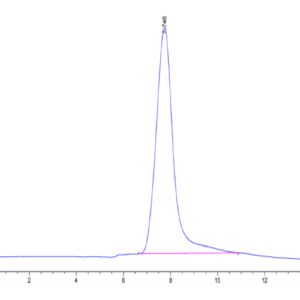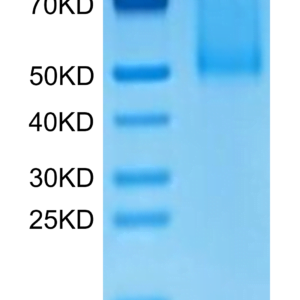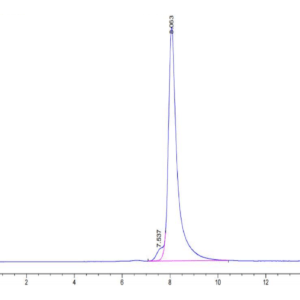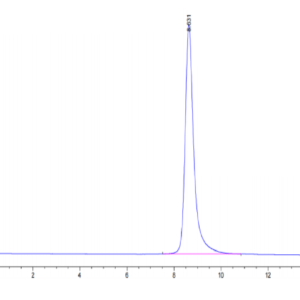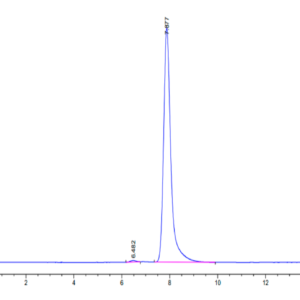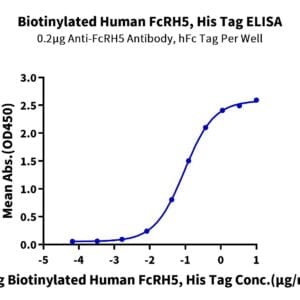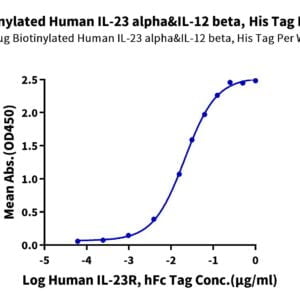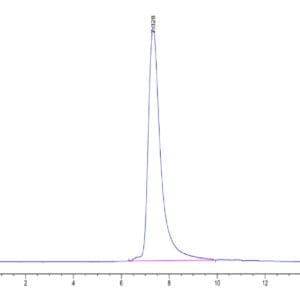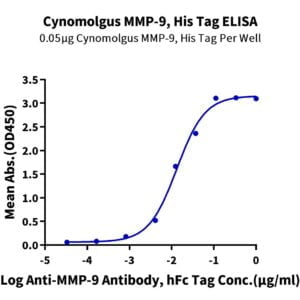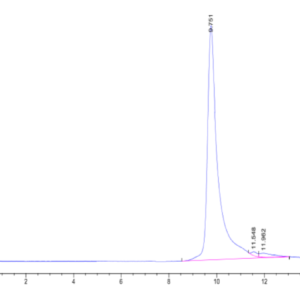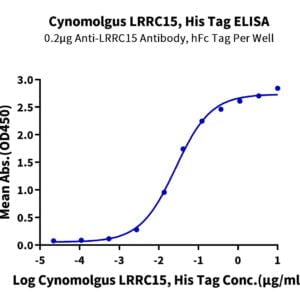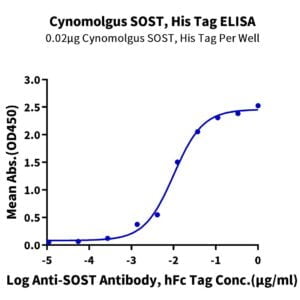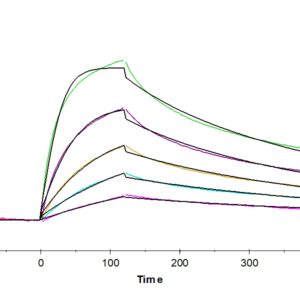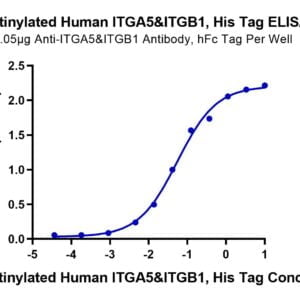| Weight | 1 lbs |
|---|---|
| Dimensions | 9 × 5 × 2 in |
| accession | Q06481 |
| express system | HEK293 |
| product tag | C-His |
| purity | > 95% as determined by Tris-Bis PAGE;> 95% as determined by HPLC |
| background | Amyloid β precursor-like protein 2 (APLP2) has been determined to serve an important role in the progression of a number of cancer types. APLP2 expression was significantly associated with disease-specific survival (P<0.001). APLP2 may be used to potentially predict patient prognosis, and to guide clinical diagnosis and treatment in CCRCC. |
| molecular weight | The protein has a predicted MW of 77.16 kDa. Due to glycosylation, the protein migrates to 85-100 kDa based on Tris-Bis PAGE result. |
| available size | 100 µg, 500 µg |
| endotoxin | Less than 1EU per μg by the LAL method. |
Human APLP2 Protein 5102
$255.00 – $850.00
Summary
- Expression: HEK293
- Pure: Yes (HPLC)
- Amino Acid Range: Gly32-Ser692
Human APLP2 Protein 5102
| protein |
|---|
| Size and concentration 100, 500µg and lyophilized |
| Form Lyophilized |
| Storage Instructions Valid for 12 months from date of receipt when stored at -80°C. Recommend to aliquot the protein into smaller quantities for optimal storage. Please minimize freeze-thaw cycles. |
| Storage buffer Shipped at ambient temperature. |
| Purity > 95% as determined by Tris-Bis PAGE |
| target relevance |
|---|
| Amyloid β precursor-like protein 2 (APLP2) has been determined to serve an important role in the progression of a number of cancer types. APLP2 expression was significantly associated with disease-specific survival (P<0.001). APLP2 may be used to potentially predict patient prognosis, and to guide clinical diagnosis and treatment in CCRCC. |
| Protein names Amyloid beta precursor like protein 2 (APPH) (Amyloid beta (A4) precursor-like protein 2) (Amyloid protein homolog) (Amyloid-like protein 2) (APLP-2) (CDEI box-binding protein) (CDEBP) (Sperm membrane protein YWK-II) |
| Gene names APLP2,APLP2 APPL2 |
| Protein family APP family |
| Mass 9606Da |
| Function May play a role in the regulation of hemostasis. The soluble form may have inhibitory properties towards coagulation factors. May interact with cellular G-protein signaling pathways. May bind to the DNA 5'-GTCACATG-3'(CDEI box). Inhibits trypsin, chymotrypsin, plasmin, factor XIA and plasma and glandular kallikrein. Modulates the Cu/Zn nitric oxide-catalyzed autodegradation of GPC1 heparan sulfate side chains in fibroblasts (By similarity). |
| Catalytic activity #N/A |
| Subellular location Cell membrane ; Single-pass type I membrane protein. Nucleus . |
| Tissues Expressed in placenta, brain, heart, lung, liver, kidney and endothelial tissues. |
| Structure Interacts with CPEB1. Interacts (via NPXY motif) with DAB2 (via PID domain); the interaction is impaired by tyrosine phosphorylation of the NPXY motif (By similarity). Interacts (via cytoplasmic domain) with APBB2/FE65L (PubMed:8855266). Interacts (via intracellular domain) with APBB3/FE65L2 (PubMed:10081969). |
| Post-translational modification The BPTI/Kunitz inhibitor domain is O-glycosylated. |
| Target Relevance information above includes information from UniProt accession: Q06481 |
| The UniProt Consortium |
Data
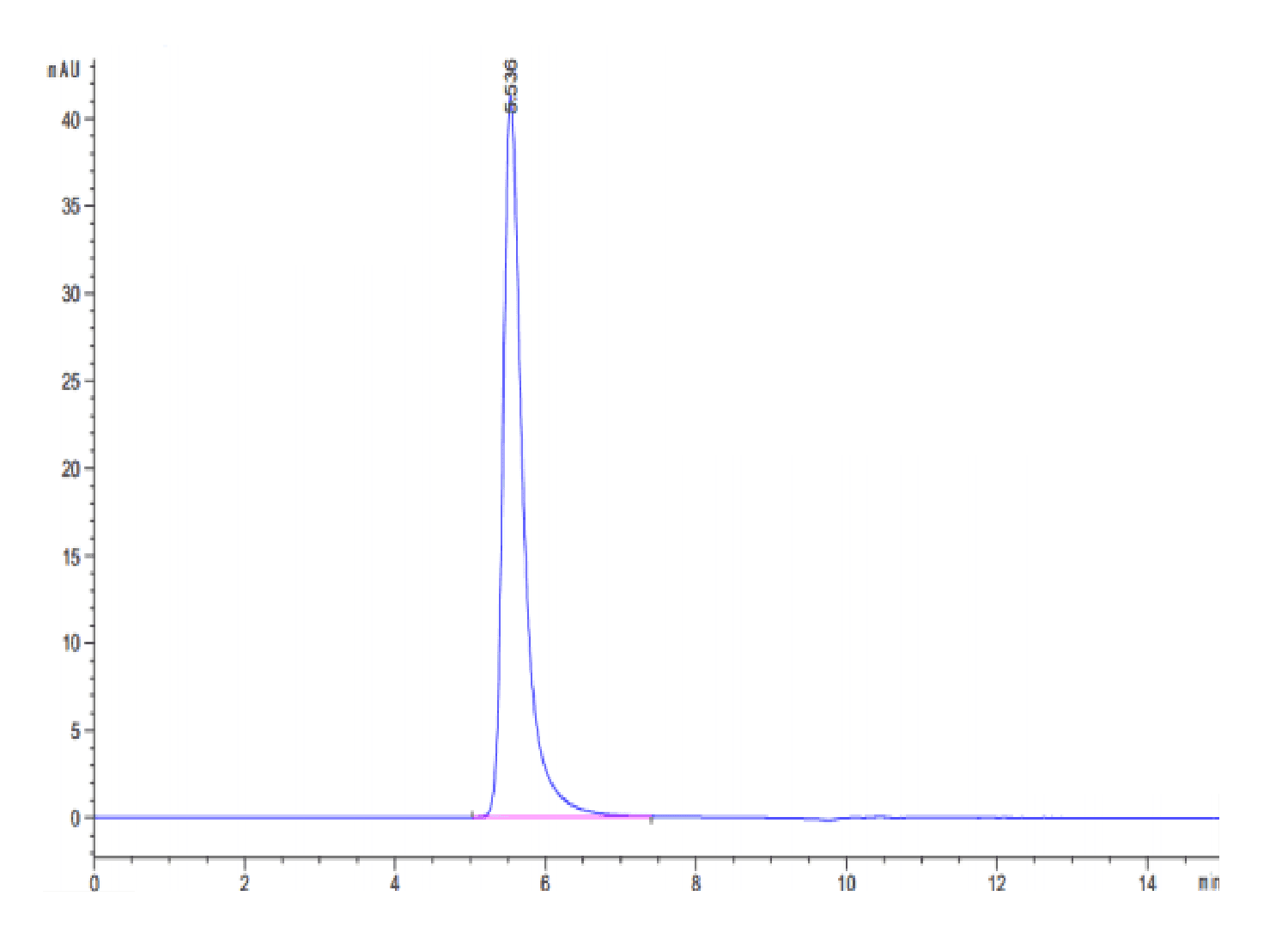 |
| The purity of Human APLP2 is greater than 95% as determined by SEC-HPLC. |
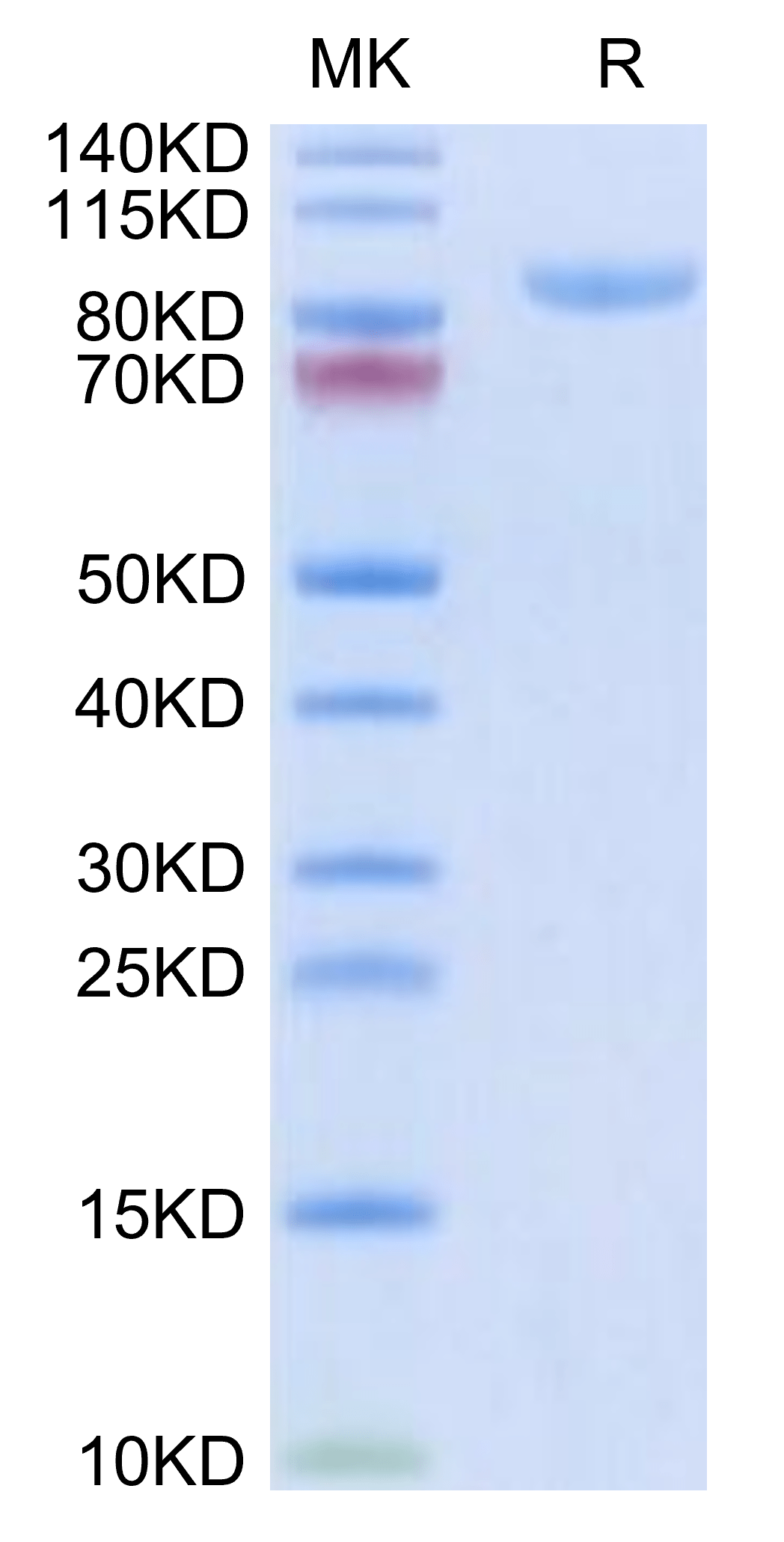 |
| Human APLP2 on Tris-Bis PAGE under reduced condition. The purity is greater than 95%. |
Publications
Publications
| pmid | title | authors | citation |
|---|---|---|---|
| We haven't added any publications to our database yet. | |||
Protocols
| relevant to this product |
|---|
Documents
| # | ||
|---|---|---|
| Please enter your product and batch number here to retrieve product datasheet, SDS, and QC information. | ||
